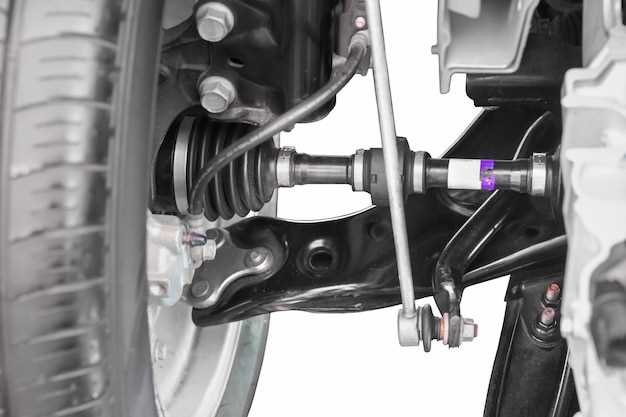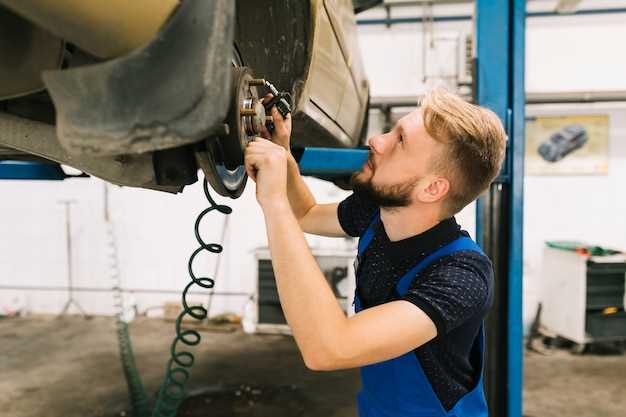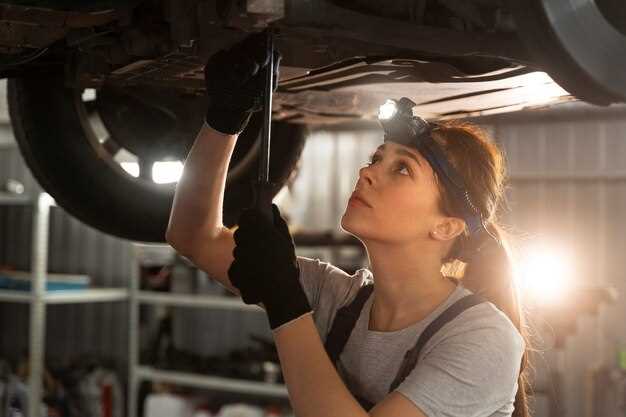

Upgrading your vehicle’s suspension system is a critical decision for any car enthusiast or casual driver looking to enhance their driving experience. A well-designed suspension system not only affects the overall handling of the vehicle but also plays a pivotal role in comfort, safety, and performance. Understanding when to make these upgrades and the specific benefits they offer can be the key to unlocking your car’s full potential.
In this guide, we will explore the various factors that influence the timing of suspension upgrades, including wear and tear, driving style, and specific performance goals. Furthermore, we will delve into the different types of suspension components available, such as shock absorbers, springs, and sway bars, and how they contribute to improved handling and stability on the road.
Whether you are looking to fine-tune your vehicle for racing purposes or simply seeking a smoother ride for daily commuting, understanding the relationship between suspension upgrades and handling will empower you to make informed decisions that best suit your driving needs.
Identifying the Right Time for Suspension Upgrades

Determining the optimal time for suspension upgrades is crucial for enhancing vehicle handling and overall performance. One of the primary indicators is a noticeable decline in ride quality. If you find that your vehicle bounces excessively over bumps or handles poorly during turns, it may be time to consider an upgrade.
Another sign is the frequency of maintenance and repairs on your current suspension system. If you are constantly addressing issues such as worn-out shocks or struts, investing in an upgraded suspension might provide a more reliable solution. Upgraded components are often designed to withstand greater stress and improve longevity.
Additionally, if you have modified your vehicle for performance, such as increasing horsepower or changing tire dimensions, an updated suspension system is essential to handle these changes effectively. A proper upgrade ensures that your vehicle’s handling characteristics match the enhancements made to the engine or tires.
Driving style also plays a significant role in determining when to upgrade. If you’ve transitioned from casual driving to spirited or competitive driving, enhancing your suspension can greatly improve your vehicle’s responsiveness and stability. Investing at this point will greatly enhance your driving experience.
Lastly, pay attention to age and wear of the existing suspension. Components that have aged may not perform optimally even if they appear to be in good condition. Regular checks can help identify when parts need replacement or upgrading to maintain excellent handling capabilities.
Key Benefits of Upgrading Your Suspension System

Upgrading your suspension system can dramatically enhance your vehicle’s performance. One of the primary benefits is improved handling. A more advanced suspension setup reduces body roll and enhances cornering stability, allowing for better control during aggressive driving maneuvers.
Another significant advantage is increased comfort. Upgraded systems often feature enhanced shock absorbers and springs, which help smooth out bumps and rough terrain, providing a more enjoyable ride. This comfort is especially noticeable over longer journeys or uneven surfaces.
Enhanced safety is also a crucial benefit. A well-tuned suspension system ensures that tires maintain better contact with the road, improving traction and reducing the likelihood of skidding or losing control during inclement weather or sharp turns.
Moreover, an upgraded suspension can contribute to increased durability and longevity of the vehicle. High-quality components are designed to withstand wear and tear, reducing the frequency of repairs and replacements in the long run.
Finally, upgrading your suspension can enhance the aesthetic appeal of your vehicle. Many drivers choose suspension upgrades not only for performance but also to achieve a desired stance and visual profile that reflects their personal style.
Choosing the Best Suspension Upgrade for Your Vehicle
Upgrading the suspension system of your vehicle can significantly enhance its overall performance and handling. However, selecting the right suspension upgrade requires careful consideration of various factors to ensure optimal results.
Identify Your Needs: First, consider the primary purpose of your vehicle. Are you using it for daily commutes, off-road adventures, or performance racing? Each application demands different suspension characteristics. For instance, off-road vehicles benefit from increased ground clearance and shock absorption, while performance cars require stiffer setups for better cornering stability.
Understand Suspension Types: Familiarize yourself with different types of suspension upgrades available. Coilovers offer adjustable height and damping settings, providing flexibility for various driving conditions. Shock absorbers improve ride quality and responsiveness, while sway bars reduce body roll during turns. Understanding these components will help you choose an upgrade that aligns with your handling requirements.
Research Compatibility: Before making a purchase, ensure the selected suspension upgrade is compatible with your vehicle’s make and model. This will prevent any fitment issues and ensure the performance improvements are fully realized. Consult with manufacturers or experienced mechanics for recommendations based on your specific vehicle.
Evaluate Quality and Brand: Opt for reputable brands known for producing high-quality suspension components. Investing in durable parts can enhance your vehicle’s handling and longevity. Customer reviews and expert opinions can guide your decision and help you avoid subpar products that may compromise performance.
Consider Installation: Evaluate whether you will install the suspension upgrade yourself or seek professional assistance. Some upgrades require specialized skills and tools, while other components can be installed with basic mechanical knowledge. Professional installations often provide peace of mind regarding safety and performance.
Test and Adjust: After the installation, take the time to test your vehicle’s handling. Adjustments may be necessary to achieve the desired balance between comfort and performance. Fine-tuning your suspension allows you to cater to personal preferences, ensuring the best driving experience.
In conclusion, choosing the best suspension upgrade involves understanding your vehicle’s purpose, researching options, ensuring compatibility, and evaluating quality. By focusing on these aspects, you can enhance your vehicle’s suspension system and improve its overall handling.
